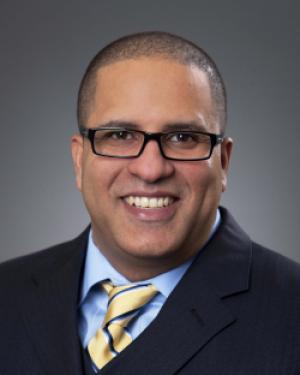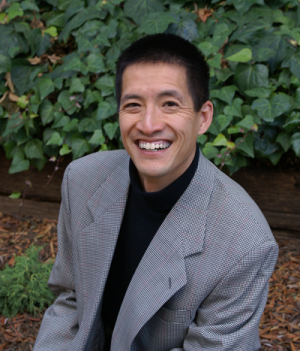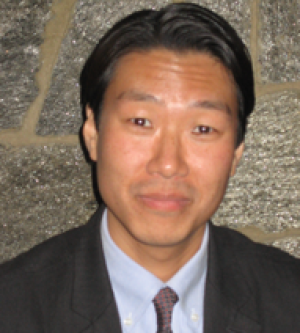Resources

For the last two years, I have taught a required class on evangelism for ordination at the United Methodist Church at Asbury Theological Seminary on the Orlando Campus during the summer and January terms. The course is structured as an intensive class delivered over five days. Over these two years, I have never had an African American student in class. For example, in the J-Term of 2015, there were 11 white students: 9 males and 2 females. In the summer of 2015, there were 22 students: 12 males (2 Kenyans) and 10 females. In the J-term of 2016, there were 23 students: 19 males (2 Filipinos) and 4 females (1 Chinese). In the summer of 2016, there were 26 students: 12 males and 14 females (1 Chinese-American female). Given this, I have been surprised by the fact that the student demographics at the Orlando Campus is 24% Latino/a and 28% African American. Maybe it is due to the southern UMC as it is known for its lack of pastoral diversity. The last module of the class is devoted to racial reconciliation and mission. Students read “Evangelization and Politics: A Black Perspective” by James Cone. As you could expect, this is the module when silence becomes unbearable as students wrestle with evangelicalism and white privilege. It is also the moment when all the students have “a black friend” or when “my roommate in college was black.” The superficiality of our conversations has been frustrating and such frustration grew to the point that I considered changing the last module to something else. It was at this point that I sought the help of a respected colleague. His suggestion was for me to change gears and examine my own experience of discrimination and history as a brown Puerto Rican in the context of North American imperialism and colonization. Using the new approach, I replaced Cone’s article with primary sources of Protestant missionaries to Puerto Rico in the early 1900s, a sociological article on “the Puerto Rican Problem,” and excerpts from Gloria Anzaldua’s La Frontera. By contextualizing the history of race relations between white North Americans, Puerto Ricans, and other Latinas, I was able to deconstruct the disregarding ethos of racism that is embedded in a systemic structure of oppression in the United States. In light of evangelicalism’s insistence of individual responsibility, confronting racism as a systemic issue brought its own complexities to our conversations. Students were more engaged in discussing issues of race and oppression in the historical context of mission and colonialism. However, the closer we got to contemporary issues, especially immigration, the tone of the conversation changed and the discomfort around ethnocentrism and negative views on immigration was palpable. A good example was when a white male student in the summer of 2016 recited the talking points of the Republican Party to the class. He referred to the negative impact on immigration on crime, employment, and US culture in general based on language and customs. To everyone’s surprise, because she never spoke before in class, only the female Chinese-American student confronted the speaker by telling her family’s story of immigration. Her mother came to the US with a temporary work permit, but after it expired she stayed. As years passed, she married an American man and became a citizen more than a decade after her visa expired. She confronted the white male student and the whole class with her story and showed the ethnocentrism and stereotypes embedded in US society against immigrants. I learned that even though I am in complete solidarity with African Americans in their quest for justice and respect, students saw me as a Puerto Rican who does not embody the African American experience. On the other hand, when I embody my experience and the history of racism against Latino/a people in the US, the perception and reaction in the classroom change. At the end, we are contextual beings and sometimes the best way to teach others about race is not through theories, but through our own experience with racism. What triggers public opposition to immigration? Is immigration a racial issue? What triggers racial resentment against undocumented immigrants? What is the value of the implementation of autobiography in the classroom? How should professors move from autobiographical data to theoretical articulations in the classroom? How can professors help students take responsibility for their assumptions of the other in a safe manner? Is this desirable, or it would a shock approach to student assumptions be better?

It was by now a pretty well-known social experiment. A man dressed like a homeless person collapses on the street and is ignored by pedestrians; when the same person puts on a business suit and collapses on the same street, however, a number of strangers quickly come to his aid. Unfortunately, appearance does matter, and it matters also in the classroom. Let me turn now to share my own experiences with two students in my very first course that I taught as a full-time professor. Student One It was literally my first day of class in the seminary. I was both anxious and excited. After giving out and going through the syllabus, I followed my lesson plan on which I had worked tirelessly all summer long. When time was up, I was secretly congratulating myself for making what I thought to be a wonderful first impression, especially when a couple of students came up to me and said that they were really “psyched” for the course. Then a white woman student who looked to me to be in her fifties introduced herself to me with not only her name but also her credentials. She said that she had a doctorate in adult education and that she could tell that I had little knowledge or experience with adult education (of course, I had told everyone at the beginning of the class that this was my very first year teaching at the seminary). She followed up and commented that my syllabus was too long and too intimidating and that I talked too fast, gave too much material, and failed to provide students any handouts. I was floored and a little embarrassed, but I managed to keep myself calm and said something to the effect that I would try to provide some handouts and that I would always be available for conversations if she had any questions about the course. Unfortunately, my “invitation” resulted in one after-class encounter that has remained vivid in my memory even almost twenty years later. I had just returned a written assignment to the class, and this woman came up after class again and asked me why she got a particular grade. (It was not a bad grade, as I remember that it was in the B range.) Since I always provide ample comments on student papers, I pointed those out and explained that her paper could be better and more tightly organized. To my surprise, she responded by saying that my “problem” had to do with the fact that English was not my first language and that I did not understand that there was a kind of writing “in the West” known as stream-of-consciousness. Would she feel the same liberty to approach a white male professor and say something like this if she got a B-range grade from him? I think not. Student Two It was time to look at my very first set of course evaluations as a full-time professor. This time, I was more anxious than excited. One particular student comment stood out among the—thankfully—many affirmative and encouraging evaluations that I had received. This student basically said he or she had gotten to the classroom feeling very tired from a long day of work as well as feeling rather frustrated as this was his or her first day in seminary. Sitting at the back of the classroom, this student said he or she felt even worse when I walked into the classroom and stood behind the lectern as the instructor for the course. I could not repeat it verbatim but it went something like this: “I could tell it was going to be a disaster as soon as I saw him, but then Professor Liew started to speak and I was immediately energized and engaged.” I am grateful and glad that, based upon a very positive evaluation, this particular student was able to learn from me and with me, but what this student assumed upon just seeing me is most telling. Why would he or she make the foregone conclusion that the course was going to be bad as soon as I showed up? Yes, there is another “appearance” that one cannot change as easily as putting on or taking off a piece of garment. These two students taught me early on in my teaching career that students carry all kinds of assumptions, racialized or otherwise, with them into the classroom, and so I have to be prepared for them. Of course, we as teachers are not immune to this: we have assumptions that lead us to think, act, speak, and make evaluations in particular ways with particular persons. If teaching is truly one of the best ways to learn, I want and need to learn from these early experiences in my teaching career how students may also need to prepare for class in ways that go way beyond what are listed on their syllabi. Allow me to share the following video by some students at the Rhode Island School of Design as we all work to plan and prepare for the beginning of a new academic year (note that the video contains strong language that some may find offensive). The video raises a host of issues and questions to consider. What questions arose for you as you think about your own teaching? What might it mean for students and teachers to “veil” themselves in classroom contexts? Social DNA comes with the bodies that enter our classrooms, but it can also be addressed and even changed by what we do in our classes.

Cláudio Carvalhaes Associate Professor McCormick Theological Seminary Last time we talked about the body in the classroom. Our body, my body, the bodies of my students, are all shaped by institutional bodies that carry values, marks, love, deceptions, commitments and history. Just as our bodies carry constructions of race, gender,

KC Choi Associate Professor, Department of Religion Seton Hall University I was horrified to discover that Dylann Roof regarded Asians as inherently racist and thus possible allies to white supremacist causes. That opinion received little media attention, except for spotty clusters throughout social networking sites. And while Roof’s assessment of Asians is nothing short of galling, I also found them disquieting; it was the words of a white supremacist mad man that had uncomfortably recalled a specific set of experiences in my course “Race, Politics, and Theology.” Students in my course have mirrored the relative racial and ethnic diversity of...